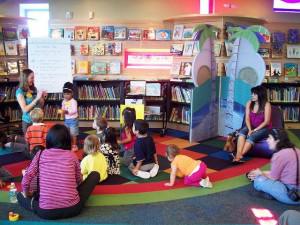The following post is from Iris Yuan, an Education Consultant at Tutorspree.com, a marketplace for high-quality tutors across the country. Tutors at Tutorspree.com are highly-educated, experienced people who love what they’re doing. For more information, follow @Tutorspree on Twitter or e-mail [email protected].
Helping children have fun does not mean they can’t be engaged, participating, and learning about the world around them. Below, we share tips and quotes from experienced tutors who’ve worked with children over the summer.
Juliette, a Spanish tutor in New York, says cooking is a great way to both learn and have fun. “Stash your children in the kitchen. Make up some at home cooking projects. There are many cookbooks out there that have recipes appropriate for children to help with and suited to their tastes as well.
Not only does cooking teach a life-long skill, it teaches children how to follow directions, be patient, organized, and clean up after themselves. It also makes children feel great to see that they can create something delicious! Furthermore, if children ever express being dissatisfied with the meals you prepare them, you can remind them about all that goes into creating a meal for a family. In order to make this type of project into a full day’s activity, first let your children make a list of necessary ingredients for the chosen recipe, then go to the market together with the children, and have them help you collect the groceries. This may even be a good opportunity to teach about prices and how to select what’s best.”
Another tip to getting young children interested in learning is to take library and museum trips together.

Many museums have kid-friendly areas with interactive activities. Your child may naturally be drawn to a certain area or subject, which you can build on later in the summer. Meanwhile, most libraries hold story times that are age-appropriate. When you’re at the library, be sure to show interest in the books yourself. Find a corner for quiet reading time and read to them, but also read to yourself, so that your child can learn by example.
Suzie, an experienced English tutor on the East Coast, tells us that “reading is easy. It’s portable. And maybe best of all, it’s subtle, sneaky learning. You learn while you aren’t even aware of it. Not only can it be a diversion on the beach, an alternative to “Boring! Not that again!?” TV, or a mental vacation on a hot afternoon, but reading also exposes new vocabulary, offers a variety of sentence structures, and painlessly proffers a proliferation of punctuation. All this without tests, worksheets, or quizzes.”
Finally, if learning school-related material is what you’re looking for, try in-home tutoring and teach some material yourself (but keep it fun!).
Aaron, a past Teach for America corps member, has been teaching for over ten years. He suggests that a great way to help children learn better is by using “positive sandwiches” when giving criticism. This means giving praise first before mentioning areas of improvement, and following up with another positive comment. “When feedback is ‘sandwiched’ between positive comments, problematic reactions are less likely,” says Aaron. “Learning doesn’t mean you can’t have fun. I also use funky colored pens or paper, stickers, jokes, and laughter in my lessons.”

